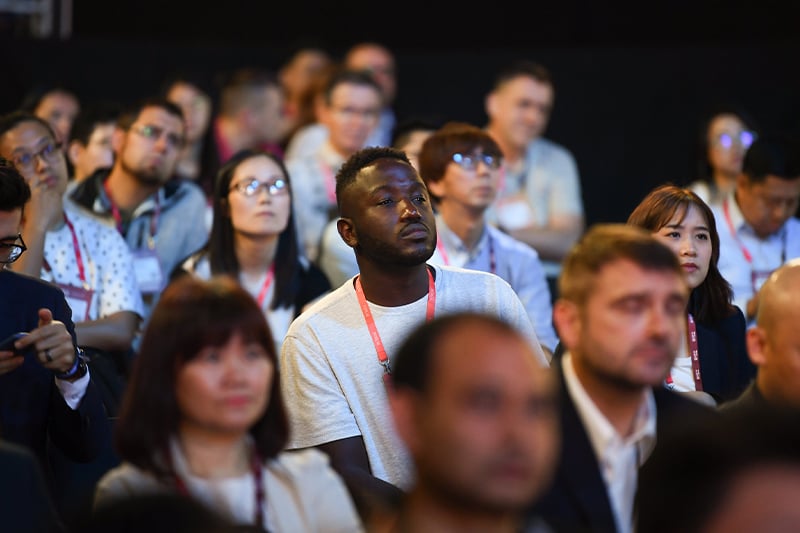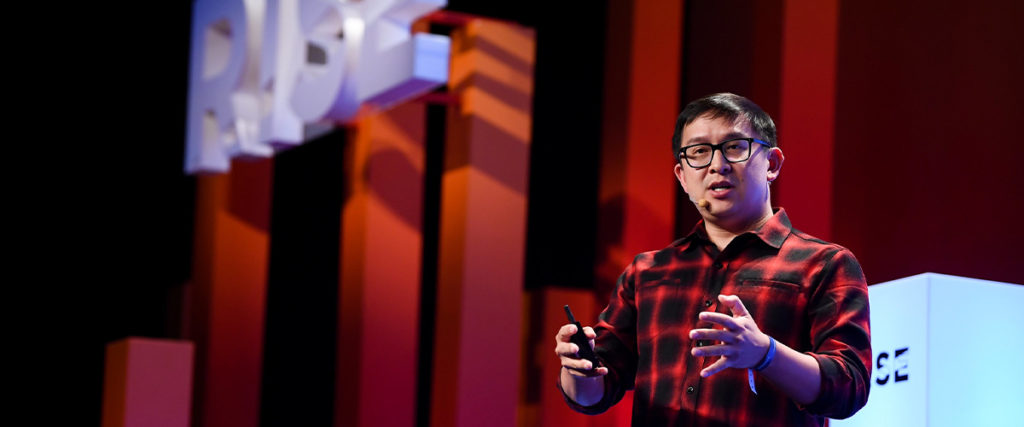At RISE, Kevin Lin, Co-Founder of live streaming platform Twitch, explained how streaming platforms now gather 1 billion users a month. That’s more views than US television networks combined. With over 2 million content creators now on Twitch, the platform has come a long way since its launch in 2011.
Twitch is a streaming platform that allows content creators and their audience to interact with one another in real-time. The brainchild of Kevin Lin, Justin Kan and Emmett Shear, it found its beginnings in a live streaming platform Justin.tv that started out showing the daily life of a man in San Francisco and went on to become a website with 30 million unique users a month. Now reinvented as Twitch, theirs is an all-in-one streaming and communication platform for online gamers that has launched the careers of streamers like Richard (Ninja) Tyler Belvins, a 28-year-old who plays Fortnite with celebrities like Drake and has been sponsored by Samsung and the NFL. Speaking at RISE, Kevin talked his audience through Twitch’s story from ad hoc streaming platform to Amazon-owned, dominant player with the sixth-highest traffic for streaming video in the world.

Photo credit: Stephen McCarthy/RISE via Sportsfile
Justin.tv started out life in 2007 as a 24/7 live stream of tech entrepreneur Justin Kan’s life in San Francisco, filmed by a camera strapped to his head. As he went about his day, a growing audience followed his every move, and soon the concept developed with the aim of giving everyone the ability to live stream their lives. “The goal was to make a free platform where anyone, anywhere in the world could reach anyone, anywhere in the world, for free, live, and interactively. And somehow we managed to convince a bunch of Silicon Valley investors to give us money to do this. It was very straight forward: video and chat. That’s the engagement. It’s a one-to-many broadcast with people interacting with each other in the chat room. It sounds simple, but it is a very engaging experience,” said Kevin, who had teamed up with Justin and Emmett in 2008. And, once they’d gotten the ball rolling, they layered their love of gaming on top of it. “We realised quickly that if we didn’t really turn this passion of ours, video games, into this business that we were building, we might be in a little bit of trouble. We were constantly playing till midnight at the office, going home, and watching videos on YouTube. But, we’d play competitively. We held tournaments in the office for a bunch of our startup friends. We thought that this could potentially be a habit that could be translated into the product that we were building.”
Twitch officially launched in June 2011 at E3, a renowned gaming conference held every year in Los Angeles. Twitch was specifically made with creator feedback in mind. “One of the biggest things we started to do, as we started to think about video games, was actually talk to creators. We reached out to them and asked simple questions like, ‘Would you live stream if you had the opportunity? How would you want to make money? What would your career hopes and ambitions be by becoming a live content creator?’ And then we built Twitch and we grew and grew and grew,” recounted Kevin. In 2014, a Wall Street Journal article was published citing household names in media like Netflix, Google, Apple and then there was Twitch – at that point the fourth largest pusher of Internet traffic in the United States. Shortly after the article came out, Twitch was bought out by Amazon for USD 970 million with the e-commerce giant acquiring both a deeply engaged streaming audience and an unconventional, yet profitable media company.
When it comes to profitability, Twitch adopts multiple commercialisation models, from ads, where creators receive a revenue share, to Twitch Bits, which are essentially virtual tips or donations that viewers give to their favourite creators. “Twitch is free. It’s free to use. It’s free to watch. Yet, people will pay money to creators – millions of dollars at a time just to support them as their entertainer of choice. So again, free content, free platform, yet people pay USD 5 a month to creators just to support them directly. It’s a very emotional reason for purchasing on Twitch and is very much a patronage model,” explained Kevin to his audience. “We believe that the future is not just broadcasting through the Internet. It’s about creating differentiated engagement opportunities around this content.”
You might also like E-Sports Platform Introduces Crypto Cash To Competitive Gaming

Photo credit: Stephen McCarthy/RISE via Sportsfile
“Multiplayer entertainment is what we do at Twitch. It’s not only about the creator creating content, but also about the audience affecting the way the content goes – if the creator answers a question from chat, that person just impacted the content. You’ve completely changed the show. We’re trying to change entertainment to make it a bit more engaging, a bit more interactive, really bringing the audience into the show itself.” Today, viewers on Twitch spend an average of two hours a day on the platform – about half the time they spend watching television and more than double the time they spend on YouTube. “Our average audience is 25 years old – an audience that has completely migrated off of television. They want more selection of content. They want deeper engagement. They want a feeling of connecting with their celebrity.” Twitch creators vary from individuals to game companies, eSports players, tournament organisers, and now, TV networks and sports leagues.
Thanks to their mothership Amazon, Twitch now has the rights to the NFL Thursday Night Football games. But, instead of simply broadcasting them, Twitch takes the raw feed of the game and content creators become the commentator. “It’s like watching sports with your friends on your couch in your living room with your own friend’s commentary. That’s been this fundamental thing that we did differently and the sports companies are starting to really like it.” This is also done for the NBA with G League. “We have hundreds of creators around the world that actually commentate in their local languages on NBA content. For the creators, it’s great, because they get this professionally-produced feed that is free for them to pull. And then they can talk over it, share it with their fans, and make money off it.”
Twitch is working towards building the platform beyond the world of gamers. One of their first non-gaming sections has been one where creatives share their processes, be they painters, graphic designers or blacksmiths. Examples include Bob Ross – The Joy of Painting Marathon streams and a rising segment called ‘Twitch for Introverts’ where people knit and unfold their creative process for people to see. “The really important thing about Twitch that a lot of people don’t understand is that whilst the games are an important part of the show for sure, it really is about how you engage with your audience as a content creator. You’re building this personal relationship that has a lot of depth. Our audience raises USD 30 million a year for charity just through small events through community programs. And that’s something that I think is really enabled by live video. It’s something that you can make a personal appeal. And, because you feel like you have such a strong relationship with these creators, these players, these eSports professionals, you feel compelled to help. And that’s a big thing we try to do. We try to carry that through our product and everything we think about in the future.”
Banner Photo Credit: Stephen McCarthy/RISE via Sportsfile
Related Articles
Tim Kobe Designed the First Apple Store. He Predicts Retail Future in Asia
Payment Giant Stripe Talks About Future of the Internet Economy
Uber: How They See Their Future, and What They’re Planning Next





